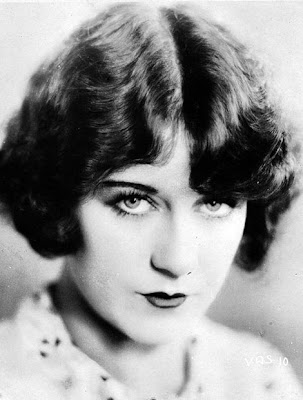Saturday, March 30, 2013
The Ice Flood (1926)
I’ve been reading a lot of vintage comic books lately, most made between the 1940s and the ’60s. By the current standards of the medium, they’re pretty silly: Characters are broadly drawn, in both the literal and figurative sense, and the stories are predictable. But the pages are also bold and colourful; the language strident; the enthusiasm for every implausible event clear and unapologetic. And that’s just fine. In these old, well-loved tales, everything deserved an exclamation mark.
The Ice Flood is like that. It delivers with gusto from start to finish, and director George B. Seitz (who specialized in action serials) even shows some artistic flair along the way. I bet you’d like it.
The Ice Flood details the attempts of a young Oxford man, Jack De Quincy, to clean up the Oregon lumber camps owned by his dad. Well-educated, cagey, and strong, Jack (Kenneth Harlan) is the man to get it done. But will even his gifts be enough to overcome the camp’s brutal bully, Dum-Dum Pete (Frank Hagney)? And can Jack couple force with virtue, thus winning the heart of the camp’s only pretty girl, Marie (Viola Dana)?
Watch and see!
Yes, do. The Ice Flood delivers what it promises: an unencumbered plot that sends us quickly from one action sequence to the next. It opens with a near-giddy montage of falling trees, each stricken pine a symbol not just of the industry of man, but the relentless power of the Ice Flood—an annual overflow of frozen river-bits that annihilates anything in its path. This is an event of near-cosmic significance, if the verbiage accompanying the scene is to be believed.
In the camps, though, it’s business as usual. And that’s not good. Labour interruptions, missing cash, and general disorder plague them all, causing concern for their far-away owner/tycoon, Thomas De Quincy (James Gordon). Thomas intends to fix that.
The elder DeQuincy isn’t a young man, but he’s still energetic. You get the sense that he earned his wealth. We meet him in his office, in the city, accompanied by a pair of fat old CEOs who occupy chairs while he paces about. Thomas awaits the return of his son from school. He brandishes a book of poetry, written by the younger DeQuincy, before his colleagues. We see their thoughts, unspoken of course: images of a mincing, prancing milquetoast appear over their heads as they sit.
I love this stuff—this mixed reality where actual and imaginary images occupy the same space onscreen. You almost never see it in sound films. Moments later we see it again, when Jack arrives and promises to clean up the camps on his father’s behalf. Thomas has faith in his son, but he’s concerned—he describes the problems the young man will face and we watch Jack’s face grow dark; images of brawls and boozing super-imposed over it. But Jack, being the man he is, is undeterred. And Thomas, being the man he is, lets him give it a try—while making a wager with his son that he’ll fail.
Jack is not a man to bet against. Not just a scholar, he’s also a boxing champion, which makes his adventures in the Northwest less risky than they seem. Jack indeed does turn around several camps before arriving at the one we’re concerned with, where Marie plugs away and Pete rules like a childish tyrant. None have (or could) stand up to the hulking Pete, but Jack does, setting up a pretty well-delivered amateur boxing match that leaves the bully flattened. Pete is a villain with a capital ‘V’, and the ass-kicking is satisfying to watch.
The Ice Flood is so upbeat, peppy and brisk that you almost forget about that buildup of ice just waiting to be unleashed upon the wilderness. But there it sits, and when Pete deposits tiny Marie, unconscious, in a tiny boat, just down-river, it becomes clear that those frozen blocks are headed her way soon. What follows doesn’t fool us—whatever those blocks are made of, it’s not ice—but Seitz knew when to cut, and so, we are still transported. Ice by massive chunk of ice overflows the river banks, bowling over ancient trees (wait—perhaps the flood isn’t annual, then?) and Marie’s boat, or a bobbing little model of it, anyway, awaits demolition. But if you think Marie’s going down with that vessel, you don’t know Jack.
The Ice Flood packs a lot of action into sixty minutes. Exuberant, if not breathless, action. The film never quite manages to be tense, the way, say, The White Desert, a film of similar length made the year before, did so brilliantly. The White Desert, too, was about the perils of the cold, but thanks to better editing, more nuanced characters, and higher stakes, it made the whole experience of watching seem epic. The Ice Flood isn’t epic, it just sounds that way. But it’s the thought that counts.
I saw The Ice Flood at Cinefest 33 in Syracuse, NY; March 15, 2013.
Subscribe to:
Post Comments (Atom)
+-+George+B_+Seitz+-+1926.jpg)


No comments:
Post a Comment